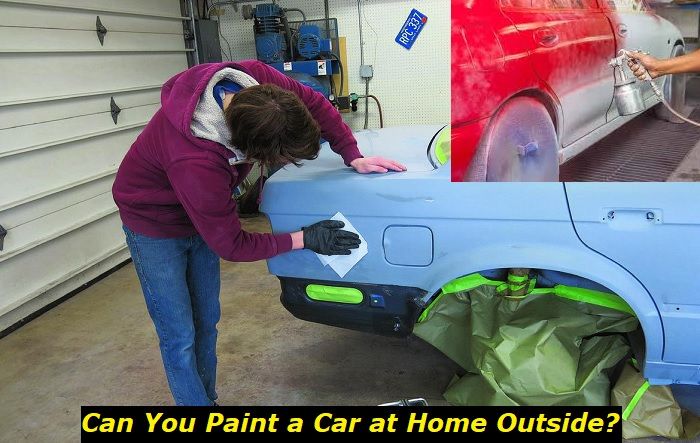The Polaris Ranger 1000 constantly makes the list of top ATVs in the market. It offers users the brute power expected without skimping on comfort and convenience. Whether you are doing some research before purchasing a Ranger or looking to maintain yours in excellent condition, this article will supply the information you need.
Owners who maintain this powerful ATV correctly can expect years of service even on the roughest trails out there. Read on to learn more about the problems affecting the Polaris Ranger 1000 and the best solutions available.
.jpg)
Troubleshooting your Polaris 1000 Ranger
The Ranger is amongst the most reliable ATVs. When it begins to act up, you can troubleshoot as indicated below to get to the root of the problem.
How to Troubleshoot a Polaris Ranger:
- Ensure your gas tank is not running low.
- Check your fuel system by examining the fuel line and the crank to ensure gas moves efficiently.
- Inspect your fuel filter to ensure it is not blocked.
- Inspect your battery to ensure it is fully charged.
- Check your air filter for signs of clogging that may choke your engine and prevent it from running. If your air filter is damaged due to driving in wet or dusty conditions, replace it.
- Examine your spark by removing the plug from your cylinder head and reinserting it into the wire. Crank your engine and check for a spark on your electrode to ensure it works correctly. If your spark plug is faulty, replace it.
- If problems persist after eliminating your fuel, air, and spark plug, you will need to inspect or replace your coil.
Your Polaris Ranger 1000 is Overheating
Few ATV riders purchase their machines to enjoy leisurely drives on paved roads. If you are a lover of off-road adventures, your Ranger will likely overheat sooner or later. There are several reasons for overheating in your ATV, including:
- Coolant leak - always check for leaks beneath the ATV or around your radiator.
- Damaged radiator cap - check by topping up your fluid reservoir and observing if the fluid leaks from the cap.
- Blocked radiator fins - check for dirt or debris clogging the fins
- Worn out radiator fans
- Faulty water pump
- Faulty temperature sensors
Solution
Where a coolant leak causes your problem, inspect your radiator for the source of the leak. Small holes are easy to fix with a sealant, whereas large cracks on the radiator require a replacement. Small leaks can also be fixed using a hose in your cooling system.
If your Ranger has a damaged radiator cap causing leakage and overheating, you need to buy a new one to forget overheating problems. When you discover that clogged fins cause your heating problem, all you need to do is to spray it with water to remove all the debris. Riders using a pressure washer are cautioned not to use a high setting that may ruin their radiator. Once you remove the debris, your radiator resumes optimal heat dissipation.
Rangers with worn-out radiator fans require a replacement to ensure that your engine gets sufficient airflow to prevent overheating. After replacing your fans, avoid riding in areas with many broken branches or rocks on the trail.
Your stock water pump may be behind your overheating engine. Many Ranger owners are preferring to upgrade to pumps made of billy aluminum that are stronger and last longer.
Do not rush to replace any parts before ruling out a faulty temperature sensor. It has been known to raise a false alarm by turning on the check engine light unnecessarily. Have a mechanic check out your temperature sensor and install a replacement if your current one is found to be defective.
Your Polaris Ranger 1000 Won't Start - Dead Battery
Dead batteries are a common cause of failure to start in many machines; your Ranger is no different. As the troubleshooting summary suggests, a beat-up battery may prevent your engine from starting.
Solution
Use a multimeter to ensure your battery does not run below 12V. If your battery reading is below 12V, you will need to charge it. Remove it from the ATV and use alligator clips at the ends of charging wires to connect its terminals to a battery booster to charge your battery.
If your battery does not charge or gets drained quickly, you are well advised to purchase a replacement.
Your ATV Won't Start - Engine is Not Starting Over
Do you have a charged battery and enough gas in the tank, yet your Polaris Ranger mysteriously refuses to start up? The most common culprits are a spark plug failure or an electrical malfunction. In rare instances, your Ranger's failure to start may be caused by a malfunction in other components of your ignition system, e.g., the coil or capacitor discharge ignition.
Solution
Inspect your ignition system by checking your spark plugs for any signs of rust or blockage. Confirm the presence of a small gap in the plug that allows spark formation. You can also use a multimeter to test for the presence of a spark. Once you identify the problem as the spark plug, you are well advised to clean and regap it.
Cleaning, regapping, and reinstalling spark plugs is a simple fix that most DIYers will complete in about five minutes. If your spark plug is beyond cleaning or regapping, the best solution is simply to choose a new one.
If your trouble starting is not due to fuel, battery, or spark, your dealer or a licensed auto repairman may have better luck diagnosing and fixing the problem.
Your Polaris Ranger 1000 is Producing Blue/Black/White Smoke or Leaking Oil
Most ATVs (including your Ranger) usually produce white smoke caused by condensation being burnt off. Where your Ranger produces too much white smoke, the likely cause is a split head gasket. If your ATV has black exhaust smoke, your engine is likely suffering from an excessively rich fuel mixture. Blue smoke usually indicates cross-contamination of the air-fuel ratio in your cylinders.
Solution
Rangers producing too much white smoke due to a split head gasket need a replacement as soon as you detect the problem. Riders are advised to fix the issue immediately to avoid paying a much larger tab should the problem create additional mechanical issues in your ATV.
Black smoke could be caused by a clogged air filter which alters your fuel-to-air ratio. Inspect your air filter to ensure it is not obstructed. Where the air filter is not the apparent culprit, you may need to improve your fuel quality. If changing your fuel quality does not work, it may be best to rely on professional advice.
Blue smoke indicates that engine oil is burning inside your combustion chamber. This problem is severe and could be caused by various issues. The most common causes are faulty piston rings and leaky valve seals. This smoke usually indicates that your engine oil levels are running low and must be refilled to prevent severe engine damage.
Your Polaris Ranger 1000 is Losing Performance - Belt is Slipping
If your Ranger is not riding like it used to, a likely suspect is slippage of the belt. You can inspect your belt by bending it backward and checking for these signs:
- Moisture or debris
- Missing chunks in the belt
- Cracking inside the cogs
- Glazed-looking belt sides
Your belt stoppage could be due to issues ranging from ordinary wear and tear, road conditions, or damage in your clutches. Before we get into solutions, let us identify the most common causes of belt slippage:
- Your belt has outlasted its acceptable limits.
- Your belt is wet or has debris clogging it.
Solution
Your ATV's belt was not meant to last forever. Ensure you replace your belt as recommended in your owner's manual. The longer (and harder) you use your Polaris Ranger, the more advisable it is to replace your belt for optimal ATV functioning. Your belt wears out faster if you have poor riding habits that subject the belt to excessive heat.
Your Polaris Ranger 1000 Belt is Wet or Dirty
If your slippage is due to a wet belt, your best bet is to stop riding immediately. The water lubricates the belt and prevents friction between your belt and clutch sheaves, rendering the transmission useless until you dry it up.
Do not give in to the temptation to overcome slippage by compensating with full throttle. You will permanently damage your bike due to the high heat that spinning generates.
Solution
It is essential to remove all the moisture before attempting to drive further. ATV owners often go the extra step and purchase belt cases that are entirely moisture-proof. The stock belt cases are good enough for riders who do not venture into harsh driving conditions.
If you like to explore all terrains, it is advisable to check the rubber seal on your belt case periodically for signs of twisting, damage, or lack of proper placement that may be letting water in. Where necessary, refit the gasket to ensure your belt case is ready for a splashing ride.
Riders who never want to worry about water penetrating their Ranger can modify it by installing a snorkel kit that extends your exhaust and the inlet port. Another way to turn your Ranger into a submarine is by reinforcing the stock plastic housing vulnerable to damage in harsh terrain using a new sturdy belt casing. Riders are also advised to ensure that the bolts on the housing are not loosening and creating gaps for moisture to penetrate.
Your Polaris Ranger 1000 is Losing Top-End Power Due to Flex Fatigue
Over natural use, the belt's aramid cord may lose its adhesion and strength, causing your Ranger to suffer from flex fatigue.
Solution
The loss of top-end power is usually due to the belt thinning without suffering the damage described for a slipping belt. Check your manual for the minimum operational width recommended and ensure that your belt is within that range.
You must remove the belt from your Ranger and measure its width in three random spots to ensure it is not worn. If your belt is thinner than recommended in the service manual, replace it immediately to avoid further damage to your ATV.
About the authors
The CarAraC research team is composed of seasoned auto mechanics and automotive industry professionals, including individuals with advanced degrees and certifications in their field. Our team members boast prestigious credentials, reflecting their extensive knowledge and skills. These qualifications include: IMI: Institute of the Motor Industry, ASE-Certified Master Automobile Technicians; Coventry University, Graduate of MA in Automotive Journalism; Politecnico di Torino, Italy, MS Automotive Engineering; Ss. Cyril and Methodius University in Skopje, Mechanical University in Skopje; TOC Automotive College; DHA Suffa University, Department of Mechanical Engineering






Add comment